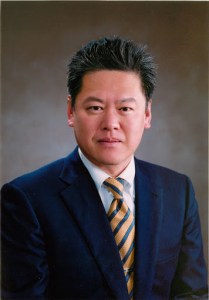
Fumiaki Ikeno
Director of Japan Reach | Stanford Center for Asian Health Research & Education
Academics and industry alike often struggle to move ideas and concepts out of research and turn them into viable products that enjoy commercial success. In 2001, Stanford University started its Byers Center for Biodesign to focus on solving the problem by offering entrepreneurship education aimed at creating new medical devices.
Dr. Fumiaki Ikeno, a Research Associate in Cardiovascular Medicine at Stanford, explained in his talk at Upgrade 2020, the NTT Research Summit, how the program seeks to avoid the usual roadblocks to medical product development by focusing on unmet needs in medical settings.
Innovation typically follows one of two processes. One is “technology push,” which is driven by research laboratories and is suitable for pharma and biotechnology innovation. The other is needs-driven, which is more suitable for medical devices.
The process for innovation that Dr. Ikeno espouses includes three steps: identify, invent, and implement. “The most important step is the first, which is identify,” he said. “Identifying a well-characterized need is the DNA of a great invention.” The most common reason for failure in medical device development is the lack of unmet needs – basically a solution in search of a problem.
To identify actual needs in the medical community, Stanford fellows and students work in multi-disciplinary teams, including members with backgrounds in medicine, engineering and business. Small teams go to hospitals or other clinical environments to observe health care providers with “naive eyes,” Dr. Ikeno said. The team is focused only on identifying unmet needs, not whatever technology is (or is not) in use.
Each team generates at least 200 unmet needs from their observations. To winnow the list, the teams apply four criteria: background, current existing solutions, market size, and stakeholder analysis.
Once it finds the most promising unmet needs, the team moves to the invention phase, where it brainstorms ideas – again following a well-defined process. After generating several product ideas, the next step is screening of the ideas according to five criteria: intellectual property, regulatory, reimbursement, business model, and technology.
The process is intended to produce “the best solutions for the best unmet need,” Dr. Ikeno said.
And it’s working. So far, more than 50 startups have emerged from the Biodesign program, which has been replicated at universities in India, Singapore, and Japan.
One startup example is iRhythm Technologies, which developed the Zio system. The unmet need it addressed was a simpler, less expensive process for detecting irregular heart rhythms.
Previously, if a patient experienced chest pain, they would first visit their primary care provider, who would likely refer them to a cardiologist. The next stop would be an electrophysiologist, who would outfit the patient with a Holter monitor, a portable electrocardiogram (ECG) that monitors electrical activity of the heart continuously. A day or two later, the patient would return so the electrophysiologist could get the results of the test, and relay them to the cardiologist.
The solution was Zio, which is a simple adhesive patch that can detect, diagnose and record irregular heart rhythms in patients as they go about their daily lives. Patients wear it for up to two weeks, so they get a more complete picture of their heart condition, delivered online to their doctor – eliminating all those trips to doctors’ offices.
It’s also less expensive, saving patients about $620 per year, Dr. Ikeno said.
For the full transcript of Fumiaki Ikeno’s presentation, click here.
Watch Fumiaki Ikeno’s full presentation below.

MedTec Entrepreneurship Education at Stanford University

Fumiaki Ikeno
Director of Japan Reach | Stanford Center for Asian Health Research & Education
LINKS TO OTHER NTT SUMMIT PRESENTATIONS
- Joe Alexander: A Cardiovascular Bio Digital Twin
- Kunio Kashino: Neural Audio Captioning and Its Application to Stethoscopic Sounds
- Tetsuhiko Teshima: Miniaturized System for Cell Handling and Analysis
- Toshihiko Nishimura: An Absolute Requirement for Precision Medicine: Humanized Organ Study
- Yasue Mitsukura: Real Time Emotion Detection Using EEG With Real Time Noise Reduction
- Full transcript of Fumiaki Ikeno's presentation

